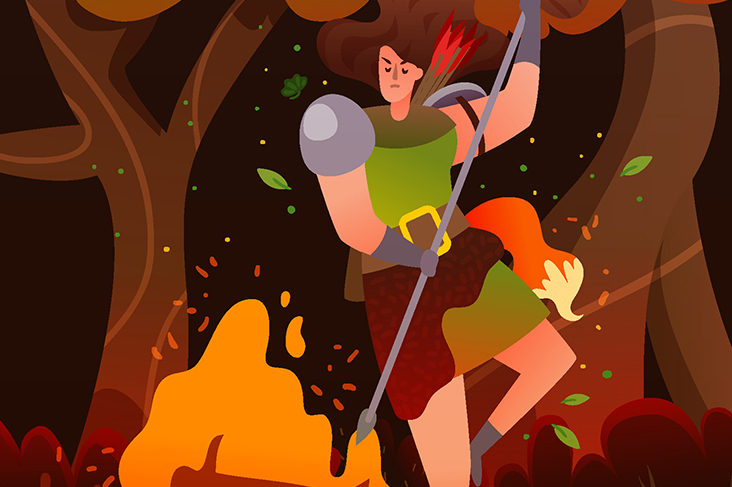Artemis, in Greek mythos, is the Olympian Goddess of the hunt, the moon, and chastity. She was the daughter of Zeus and Leto. Furthermore, she had a twin brother named Apollo. Not to forget, she is a virgin Goddess of the Mount Olympics.
Universally portrayed as a young, alluring, and powerful Goddess of the hunt, Artemis’ charm included carrying a bow and arrows while wearing a short high-knee kirtle. She was also primarily escorted by an animal.
A poem dedicated to the Goddess by Callimachus states, “who amuses herself on mountains with archery” pictures the Goddess with pleasing vignettes.
A tale of the Goddess further discusses how young Artemis sits on her father’s knee one fine day and asks him to grant her ten wishes.
Curious to find out what these wishes might be?
Here you go!
- To have multiple names to differentiate from her brother Apollo.
- To stay a virgin throughout her lifetime.
- To have her archery made by the Cyclopes.
- To successfully become a light-bringer.
- To have a short high-knee kirtle used for hunting.
- To have 60 daughters for them to be her choir.
- To have handmaidens to watch over her hunting dogs.
- To rule the mountains and jungles.
- To be assigned a city where she would only visit when called upon by mothers.
- To have special powers to help relieve the pain of childbirth.
She was also titled Lady of the lake, and her duties as a Goddess involved supervising the water of the rivers and the wild growth of plants.
Stories of this Greek Goddess vary greatly. Known for the wild nature, she danced around the mountains and forests while glazing through maiden tree nymphs that were rather common in the court of her tree cult. In parts of her kingdom, her dances were wild and utterly prurient!
Artemis was the most widely worshiped of all the Ancient Greek Gods, and her temple at Ephesus was one of the Seven wonders of the ancient world.
Additionally, Artemis used to idealize the hunting games and made sure to protect them well enough. She was honored for her most familiar form known as Mistress of Animals, where she received a few drops of blood drawn by a sword on a man’s neck.
On the one hand, being a Goddess of divinity and virtue was the wrath of Artemis’ wild nature. On the other hand, it constitutes antagonism and malice towards men. The Greek sculpture, however, avoided this ruthless claim in its testaments.
Consequently, this was all part of the glorious essence Artemis withholds.
Goddess of The Hunt: 10 Fables

Here, we list ten accurate facts about the Greek Goddess depicting her characteristics, which we promise are worth reading.
1. Birth of The Goddess
Artemis was the daughter of Zeus and Titaness Leto. When Hera, the sister of Zeus, found out that the couple was about to conceive babies, she cursed Leto never to find solid ground to land – thus, remaining unable to give birth to her children.
While in labor, Leto roamed around the entire of Greece to find a suitable location to give birth until she found Delos, an isolated and floating island. Legends say it was Zeus who brought upon the land of Delos from underneath the sea so that Leto could give birth to their off-springs, Artemis and Apollo.
In the presence of Eileithyia, the delivery of Artemis was painless as she is the Goddess of childbirth and helped Leto out during her labor. No sooner, Hera found out about this and seized Eileithyia.
A consequence of this act was that Leto had to go through treacherous pain during the birth of her twin child Apollo. At this point, Artemis played the role of a midwife and served her mother during the labor of her twin brother Apollo.
This myth led people to worship Artemis as a primary Goddess of childbirth in companion with Eileithyia.
2. Artemis and The Tale of Actaeon
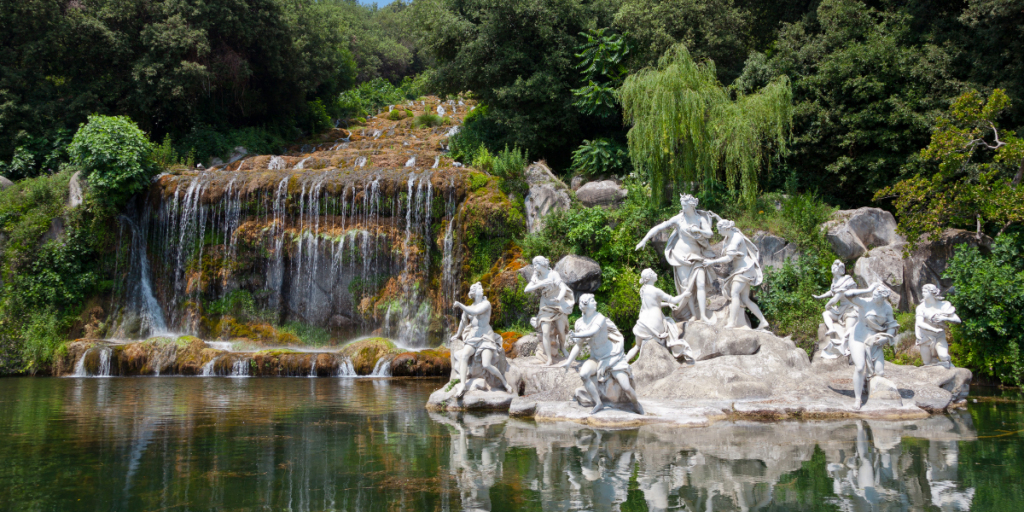
Actaeon, the son of a minor God, was the hunting companion of Artemis. During one of the hunting sessions, Artemis got tired and decided to take a bath in the waters of the parthenium.
While strolling through the woods, Actaeon happened to stumble across the Goddess. Aroused by the imminent beauty the Goddess carries, he decided to force himself on Artemis.
This brought upon the wrath of the Goddess, and she decided to turn Actaeon into a deer. Immediately after, Actaeon was found being hunted by his own mongrels as they managed to tear him apart into pieces.
In Greek mythology, Actaeon is often symbolized with the iconic interpretation of the hunter becoming the hunted.
3. The God of Beauty and The Goddess of The Hunt
Adonis was the son of Theis, also the king of Syria. Known for his handsomeness and ravishing looks, he was the designated God of beauty.
According to myths, he was killed by a wild boar on a hunting spree sent by Artemis. One version of this story states that the Goddess got Adonis hunted because of the way he bragged about being a far better hunter than she was.
Another version of the story states that Artemis was avenging the death of her dear friend Hippolytus who Aphrodite killed. Since Aphrodite and Adonis were linked to each other closely, the Goddess suspected they planned this deceit indefinitely.
4. An Epic Fable of Artemis and The Orion
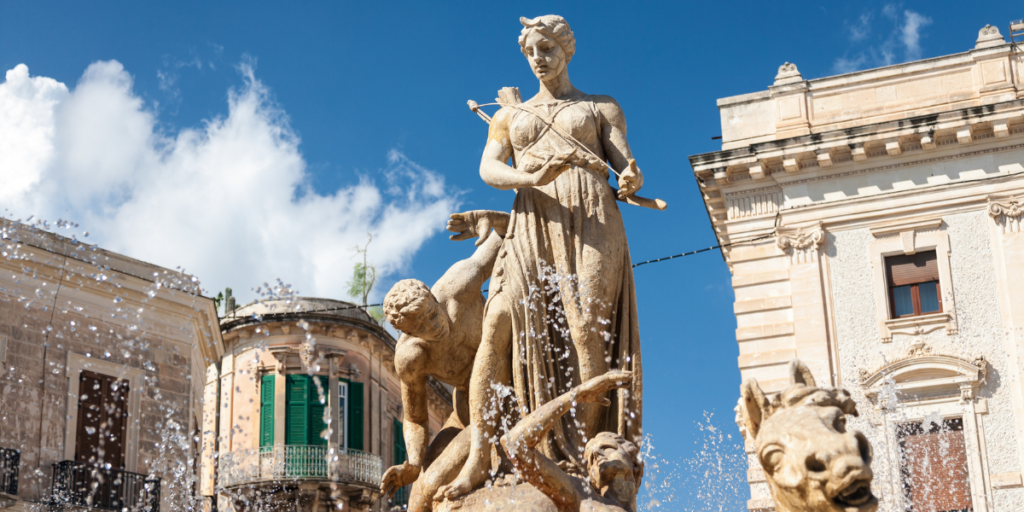
Boeotia, a part of ancient Greece, was the homeland of this delightful huntsman called Orion. One evening during a hunting session, Orion laid his eyes on the beautiful Artemis who was set out in the wild for hunting as well.
Not long after, they became good friends and then hunting partners. They started competing with each other at hunting, races, and archery contests. As they spent more time in each other’s company, the bond started growing mutually, eventually leading them to spend more time together.
Artemis and Orion started spending nights by the campfire, sharing intricate details of their lives, feeling the comfort of their significant other.
On finding out about this, her twin brother Apollo started getting possessive of his sister and decided to banish their friendship. It was because of the complications this could initiate. The fear of his sister falling in love with Orion and getting married was tense, so he disregarded her vows of love.
Apollo then plotted the murder of Orion by sending a giant scorpion that managed to put him under the sea. Meanwhile, he advised his sister to stay away from Orion because of how he raped his priestess and tried to swim out to a distant island, hoping to escape her rage.
Infuriated with this, Artemis went deep inside the sea and loosened her arrow to butcher Orion. After Orion’s death, she realized the truth of the matter, and as a tribute to their magical bond, she decided to put Orion’s body among the constellations.
5. The Goddess of The hunt and Her Companion
Callisto was a female huntress and Artemis’ most devoted attendant. As a loyal companion to Artemis, she decided to take the vow of chastity and remain a virgin.
She was a beautiful handmaiden. The sight of her caught Zeus’s attention, father of Artemis and the king of Gods. He decided to entice her by approaching in disguise as Artemis.
This occurrence left Callisto pregnant, which was discovered a couple of months later when Artemis and her escorts were bathing together.
Disgusted by Callisto for breaking her vow, the Goddess exiled the nymph from the court. Later she gave birth to a son and then instantly transformed into a bear as a punishment by Artemis.
6. Plots of Artemis on Aura
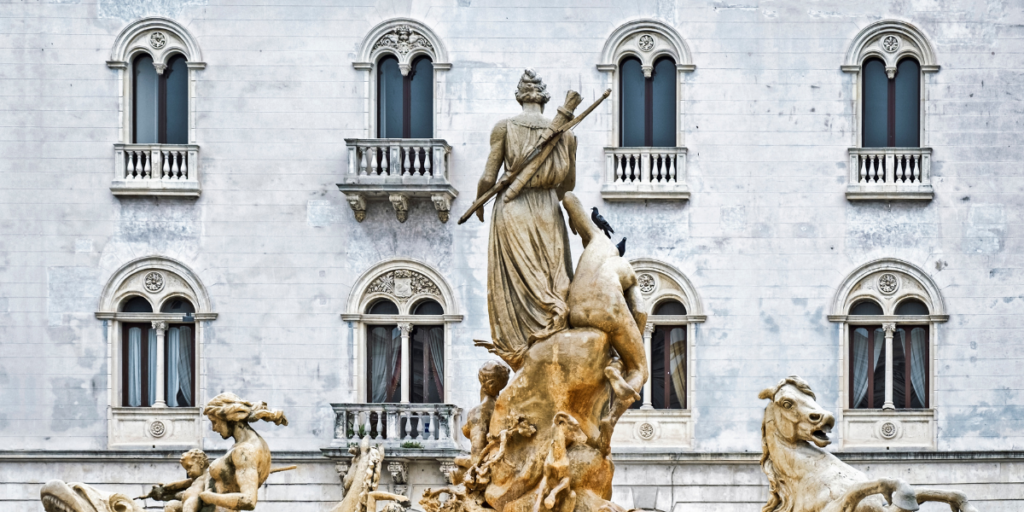
Aura was a proud maiden and a sworn virgin huntress. Although a minor deity, she was the daughter of the Titan Lelantos.
One day, Aura decided to compare her bodily charm with Artemis’ and claimed that the Greek Goddess had a rather luscious body, questioning her “flawless maidenhood.”
Taking offense to this, Artemis decided to trail Nemesis, the Goddess of divine retribution, to help her seek revenge. She then conspired for Aura’s rape. This act of defiance dove Aura wholly insane, and she ended up killing all the men she met.
When she found out about her pregnancy, Aura tried to kill herself but was unable to do so. Even more startlingly, after giving birth to two children, she gulped down one of them while the other one survived with the help of Artemis.
Aura then decided to end her life by drowning in the river Sangarios, after which she transformed into a spring by Zeus.
Artemis and The Giants
Poseidon, God of the sea, had two giant twin sons, Otus and Ephialtes, collectively called Aloadae. The twins grew up to become massive beasts and were highly aggressive hunters.
According to a fable, Aloadae came up with a plan to capture Mt. Olympus, the home of all Gods. The chief motive behind this was to captivate Goddesses Artemis and Hera.
In doing so, Ares, the Greek God of war, tried to stop them, but they defeated him. Further on, they imprisoned Ares on the island of Naxos.
Finally, Artemis decided to show up at the Naxos island and promised herself to the twin brothers if they assured the release of Ares. Meanwhile, Otus and Ephialtes started arguing over who would be given complete control of the Goddess.
Artemis identified this as an opportunity, turned herself into a beautiful stag, and slipped past right between the two. As accustomed hunters, they both start casting spears on the deer and miss their mark. During this hunting spree, they eventually knocked each other in the hands of death.
Artemis and The Legends of Chione
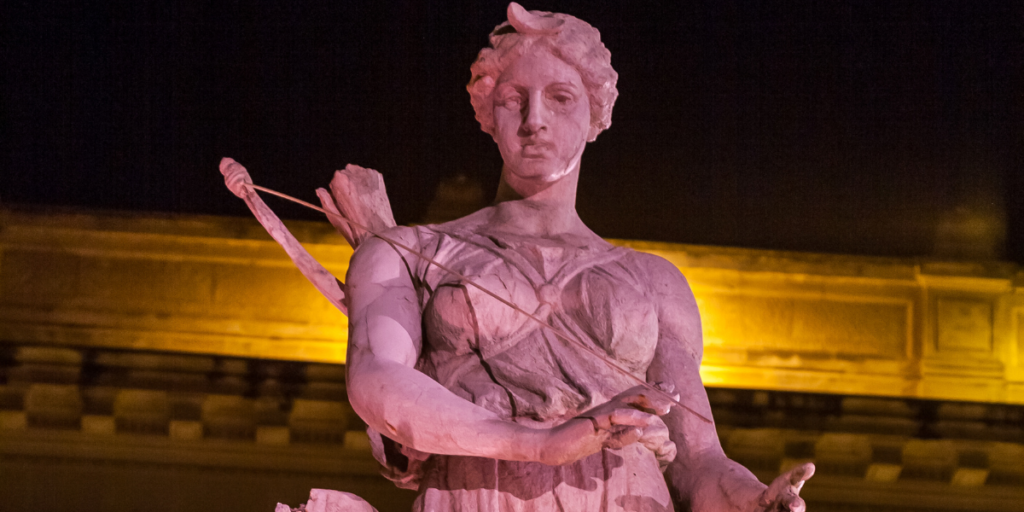
Unlike Artemis, Chione was a mortal princess and grew into a very desirable young lady that many mortals and immortals had their eyes set on.
Gods like Hermes used their magical powers to put Chione in a deep state of trance and forced himself on her. Apollo, the twin brother of Artemis, also took advantage of this situation where he disguised himself as an older woman and slept with Chione the following night.
As a consequence of the night, Chione gave birth to two semi-divine sons.
The mortal princess started perceiving her beauty as a prime reason for Greek Gods doing this to her. So much that she was convinced her elegance was far better than other Goddesses, including that of Artemis.
This aggravated the Goddess of the hunt to shoot an arrow through the tongue of Chione so that she would never be able to speak ill of her again. In the end, Chione died due to excessive loss of blood.
Wrath of Artemis on Niobe
Mother to fourteen children, Niobe and king Amphion had seven sons and seven daughters.
In a ceremony held for honoring Leto, mother of the twins Artemis and Apollo, Niobe was found boasting about being more prosperous than Leto because she had 14 children and Leto had only two.
On hearing the insult, the furious twins decided to go down to earth and put an end to all of Niobe’s children. Due to this, Niobe lost her entire family within a matter of time. Devastated by her loss, she fled back to Mount Sipylus and was then turned into a stone.
The Weeping Rock present in Mount Sipylus is still associated with this myth of Niobe.
Artemis and The History of The Trojan War
The Trojan War was executed against the city of Troy by the Greeks. Since Apollo was regarded as the Godfather of Troy, he favored the Trojans in this war. Artemis being his twin sister, supported Troy as well.
A noteworthy incident of this war includes a battle between King Agamemnon of Troy and Achilles, the greatest warrior of ancient Greek.
Right before enduring his journey to Troy, King Agamemnon hunted down one of the sacred stags of Artemis as an act to boast about his hunting skills being better than the Goddess.
This provoked Artemis, and she stranded the ship in the middle of the sea to end Agamemnon’s voyage to Troy as an act of punishment. Interestingly, a prophet advised the king that the only way out of this was to sacrifice his beloved daughter Iphigenia to the Goddess.
Eager to go and conquer his reign in Troy, he viciously lied to his own daughter about her sacrifice by telling her that she would be marrying king Achilles and duly offered her to the Goddess.
However, Artemis had always been the protector of young girls and decided to substitute a deer in the girl’s place at the altar. She also promised Iphigenia a position as a priestess at her court.
Verdict: Legacy of the Goddess of Hunt
The oldest representations from ancient Greek mythology portray Artemis as the winged Goddess holding a beautiful stag and a lioness in her hand.
She was glorified as a maiden huntress and well known for her hunting and archery skills. Often portrayed as a moon Goddess too, Artemis wore a long robe and sometimes a veil to cover her head.
The dark side of Artemis’ personality is displayed in paintings present today, where she is shown as the death-bringing Goddess.
Bonus Read: Want to unravel multiple fascinating facts about folklores in the 21st century? Here’s a guide to the kind of Magic and Witchcraft present today.
